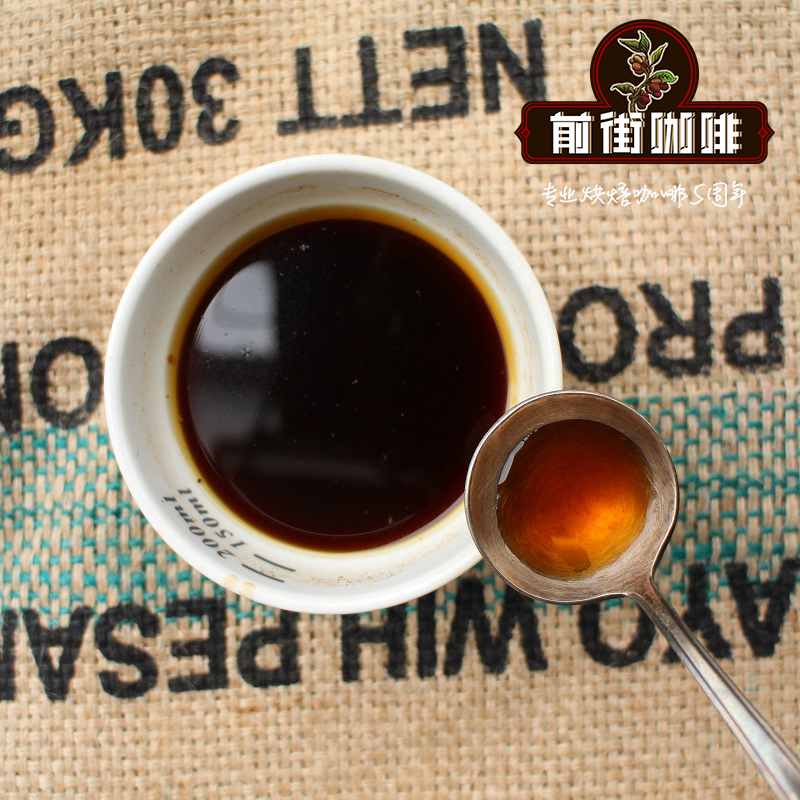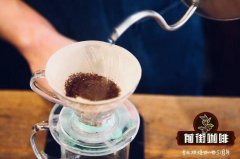Is there a place to grow Arabica beans in China? are Arabica coffee beans expensive?

Professional coffee knowledge exchange more coffee bean information please follow the coffee workshop (Wechat official account cafe_style)
Although China has a history of growing coffee for more than 100 years, especially in the past few decades, the reality is that there is still little interest in Chinese coffee in the world. Fortunately, with the joint efforts of the Chinese government, local producers, multinational bakers and industry organizations in recent years, the phenomenon is improving through more international promotion, upgrading of manor infrastructure, training of farmers and investment in other resources. Chinese coffee, especially Yunnan coffee, is writing its own story on the world coffee stage.
Due to the unique geographical environment and climatic conditions, Yunnan coffee has formed a unique flavor of strong but not bitter, fragrant but not strong, with a little fruit flavor. World-class coffee experts evaluate it as the best coffee in the world, and its cultivation techniques. The yield per unit area is also world-class.
Yunnan coffee is a variant of Arabian original species, which has been cultivated for more than one hundred years after long-term cultivation and domestication. Why is it the best quality in the world?
The quality of coffee depends on many factors, such as growing environment, climate, cultivation and management techniques and so on. Its best growing environment is low latitude, high altitude, sufficient rainfall and suitable sunshine, so it is an ideal growing zone for coffee between 15 degrees north latitude and the Tropic of Cancer. However, other areas in this zone, such as Hawaii and Saudi Arabia in the United States, or low altitude or little rain in the desert, are not conducive to coffee growth, only southern Yunnan in this zone happens to have all kinds of conditions.
Small seed coffee should be planted in the mountains at an altitude of 1800 meters. If the altitude is too high, it will taste sour, and if it is too low, it will taste bitter. Yunnan coffee is mostly planted in dry and hot valleys at an altitude of 1100 meters above sea level, so it has a moderate sour taste, rich and mellow aroma.
In terms of climatic conditions, the long light time in southern Yunnan is conducive to plant growth and photosynthesis, and the large temperature difference between day and night and low temperature at night are conducive to the accumulation of coffee nutrients. Therefore, the effective nutrients of Yunnan small-grain coffee are higher than those of other foreign coffee varieties.
Small seed coffee is easy to be infected with rust, and the yield and quality of embroidery disease are deeply affected. In the hot area of Yunnan, due to the distinct dry and wet, the red ripening of fresh fruit enters the dry season every year, and the relative humidity is low, which is not conducive to the formation and growth of rust blister.
Yunnan small grain coffee varieties
Iron pickup (typica)
Tieka Coffee, native to Ethiopia and southeastern Sudan, is the most widely cultivated variety of coffee in the Western Hemisphere. The plant is stronger, but not light-tolerant, and the yield is higher in Hawaii. The top leaf of the iron pickup is red copper, which is called red top coffee. Iron pickup is a recognized boutique coffee variety, at present, many commercial improvements are derived from this. The taste is excellent, but the output is extremely low and vulnerable to rust, which requires more manpower management.
Bourbon (bourbon)
Bourbon originated from the iron pickup and expanded after it was planted by the French on the island of Bourbon (now known as Reunion) in 1708. Bourbon also has a beautiful aroma and rich flavor, which is higher in yield and growth than iron pickup trucks. It is suitable for planting in an area of 1200 million meters, but it is less resistant to diseases and insect pests and is more sensitive to strong winds and heavy precipitation. Bourbon coffee is a variety of small-grain coffee second only to iron pickup. The lateral branches and nodes are denser, the fruit is more, and the yield is higher. But the berries are smaller and ripen more slowly. The top bud of bourbon is green, which is called green top coffee.
Katim (catimor)
Small seed coffee Catimor is the Portuguese International Coffee Rust Research Center (CIFC) using Caturra19/IXHDT832/l (HW26) and Caturra19/IXHDT832/2 (H. 6) the general name of the hybrids cultivated has been distributed in most coffee producing countries, and further breeding and adaptability studies have been made, and many different generations of Catimor hybrids and Can-mor derived species have been introduced. Some of them showed good botanical characteristics and were resistant to known rust races, while others were only used as breeding materials. Among the coffee grown in Yunnan, Catimor is the main variety, which has a large planting scale and area.
Introduction of SL28 from Kenya
SL28 is a Kenyan hybrid bred to improve the disease resistance and yield of coffee, with a mixed pedigree of French missionaries, mochas and Yementibica. At present, SL28 varieties of coffee are also introduced into Yunnan.
Introduction of Indian S288
S288 is an excellent hybrid variety bred in India in 1946. The predecessor of S288 was named S26 after the hybrid of S288 (the first generation) and Typica, because the first generation of S288 was crossed between Arabica and Liberian Liberica and always had the fishy smell of Liberia. Indian botanists then used the first generation of S288 and Typica hybrid Kent and the second generation of S288 to become the present S795.
Other introduced or cultivated species
In addition to the above introduction, there are many varieties planted in Yunnan, either introduced or locally cultivated, including roses, Yejia and many other varieties. And, of course, the Robusta species.
END
Important Notice :
前街咖啡 FrontStreet Coffee has moved to new addredd:
FrontStreet Coffee Address: 315,Donghua East Road,GuangZhou
Tel:020 38364473
- Prev

How to describe the flavor of coffee | know how to describe the taste of coffee.
Professional coffee knowledge exchange more coffee bean information Please pay attention to the coffee workshop (Wechat official account cafe_style) Acidity (acidity) is the acidity and strong quality of all coffee grown on the plateau. The acid in coffee is divided into good acid and bad acid. Good acid makes people feel pleasant and smooth, and acerbic and over-stimulating usually make people frown. Acid is the flavor of coffee.
- Next

Which country do mocha beans come from? what is the relationship between mocha beans and mocha coffee?
Professional coffee knowledge exchange more coffee bean information please follow the coffee workshop (Wechat official account cafe_style) more than 1500 years ago, coffee trees were introduced to Yemen on the other side of the Red Sea, thus starting a journey of coffee beans in the world. Yemeni coffee from the port of Mocha (now silted and abandoned) is exported to all parts of the world (mainly sold to Europe through Turkey), so Yemeni coffee
Related
- Beginners will see the "Coffee pull flower" guide!
- What is the difference between ice blog purified milk and ordinary milk coffee?
- Why is the Philippines the largest producer of crops in Liberia?
- For coffee extraction, should the fine powder be retained?
- How does extracted espresso fill pressed powder? How much strength does it take to press the powder?
- How to make jasmine cold extract coffee? Is the jasmine + latte good?
- Will this little toy really make the coffee taste better? How does Lily Drip affect coffee extraction?
- Will the action of slapping the filter cup also affect coffee extraction?
- What's the difference between powder-to-water ratio and powder-to-liquid ratio?
- What is the Ethiopian local species? What does it have to do with Heirloom native species?

